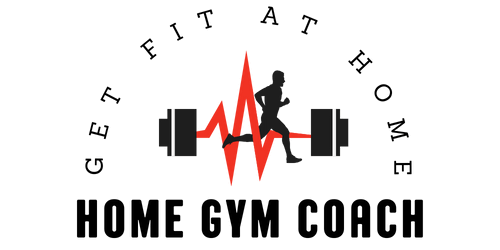Are you tired of hitting a fitness plateau and not seeing any progress in your workouts? Well, fear not! In this article, we will guide you through the process of creating a custom workout plan that will help you overcome those frustrating plateaus. By tailoring your workouts to your specific needs and goals, you’ll be able to break through barriers and achieve the results you’ve been longing for. So, let’s get started on your journey towards a stronger, fitter, and more successful workout routine.

Understanding Plateaus
Defining plateaus in fitness
When it comes to fitness, plateaus refer to a phase where you experience a halt in progress despite consistent efforts in your workout routine. It can be frustrating and demotivating, but understanding what plateaus are is the first step in overcoming them. A plateau in fitness can manifest as a stagnant performance, lack of strength or endurance gains, or even a decrease in overall fitness level. Plateaus can occur in any aspect of fitness, including strength training, cardio, or weight loss goals.
Common causes of plateaus
Plateaus can occur due to a variety of reasons, and it’s important to identify these factors to effectively overcome them. Some common causes of plateaus include the body adapting to your current workout routine, lack of variation in exercises, inadequate recovery and rest periods, improper nutrition, and unrealistic expectations. Each person’s body is unique, and what may work for one person may not work for another. Understanding these common causes can help you pinpoint the specific areas to address in order to break through a plateau.
Signs of a plateau
It is essential to recognize the signs of a plateau to take proactive measures to overcome it. Signs of a plateau can include a lack of progress in terms of weight lifted or repetitions performed, decreased motivation, feeling stuck in a rut, and a feeling that your workouts are not challenging enough. By being aware of these signs, you can take the necessary steps to evaluate and optimize your current fitness program.
Assessing your Current Fitness Level
Determining your fitness goals
Before you can overcome a plateau, you need to have a clear understanding of your fitness goals. Reflect on what you want to achieve, whether it is gaining strength, improving endurance, losing weight, or enhancing overall fitness. Having specific goals will help you tailor your workout plan to target those areas of improvement and break through plateaus effectively.
Identifying areas of improvement
Once you have established your fitness goals, it’s time to identify the areas of improvement. Evaluate your current workout routine and assess where you feel you are not making progress or where you could enhance your performance. This could involve focusing on specific muscle groups, addressing weaknesses, or modifying certain exercises. Identifying these areas of improvement will guide you in creating a customized workout plan that targets your specific needs.
Setting realistic expectations
Setting realistic expectations is crucial when it comes to overcoming plateaus. It’s important to remember that progress takes time and effort. Avoid comparing yourself to others and instead focus on your individual journey. Set achievable short-term and long-term goals that are challenging yet realistic. By setting realistic expectations, you can maintain motivation and stay committed to your workout plan, even when faced with plateaus.

Evaluating your Current Program
Reviewing your current workout routine
To overcome plateaus, it’s essential to evaluate your current workout routine. Look at the exercises you are performing, the frequency of your workouts, and the intensity of your training sessions. Assess whether your routine is well-rounded and targets all major muscle groups. Consider seeking the advice of a fitness professional to ensure that your program is balanced and effective. By reviewing your current workout routine, you can identify any areas that may contribute to a plateau and make necessary adjustments.
Analyzing strength and endurance gains
One of the key factors in overcoming plateaus is analyzing your strength and endurance gains. Keep track of the weight you are lifting, the number of repetitions you are performing, and the duration or distance you can sustain during cardio exercises. Compare this data over time to look for patterns or lack of progress. If you notice a lack of improvement or plateau in specific exercises or areas, it may be an indication that changes are needed in your training approach.
Identifying stagnant exercises
Another aspect to consider when evaluating your current program is identifying stagnant exercises. These are exercises that have become too easy or no longer challenge you due to adaptation. Your body is incredibly adaptable, and it’s important to introduce variation in your workout routine to avoid plateaus. Take note of any exercises that no longer elicit the same intensity or effort as they once did. By identifying stagnant exercises, you can replace them with new and challenging movements to continually challenge your body and overcome plateaus.
Varying Training Intensity
Understanding the importance of intensity
When it comes to breaking through plateaus, understanding the importance of intensity is crucial. Intensity refers to the level of effort and challenge you bring to your workouts. By increasing the intensity of your training sessions, you can stimulate your muscles and body to adapt and make progress. This can involve increasing the weights you use, shortening rest periods, or incorporating high-intensity interval training (HIIT) into your routine. By focusing on intensity, you can push past plateaus and continue making gains in your fitness journey.
Incorporating interval training
One effective way to add intensity to your workouts is through interval training. Interval training involves alternating high-intensity exercises with periods of active recovery. This method can help elevate your heart rate, burn more calories, and challenge your cardiovascular system. By incorporating interval training into your routine, you can break through plateaus and improve both your aerobic and anaerobic fitness levels.
Utilizing progressive overload
Progressive overload is a principle in fitness that involves gradually increasing the demands placed on your muscles and body over time. By progressively increasing the weights you lift, the number of repetitions, or the overall workload, you can overcome plateaus and continue making progress. Utilize a structured approach to gradually challenge yourself and prevent adaptation. This can involve increasing weights by small increments, increasing the number of sets or repetitions, or implementing advanced training techniques. By using progressive overload, you can push past plateaus and reach new levels of fitness.

Optimizing Exercise Selection and Order
Choosing exercises that target different muscle groups
When designing a workout plan to overcome plateaus, it’s important to choose exercises that target different muscle groups. By incorporating a variety of exercises, you can ensure that all major muscle groups are engaged and challenged. This not only promotes overall muscle development but also prevents adaptation and plateaus. Include exercises that target your chest, back, shoulders, arms, legs, and core to create a well-rounded and effective workout routine.
Rotating exercises to prevent adaptation
To prevent your body from adapting and hitting a plateau, it’s crucial to rotate exercises regularly. The body is highly adaptable and can become efficient in performing the same movements repeatedly. By rotating exercises, you can challenge your muscles in new ways, recruit different muscle fibers, and prevent plateaus. This can involve using different variations of similar exercises or trying entirely new movements that target the same muscle groups. By keeping your muscles guessing, you can continue making progress and overcome plateaus.
Prioritizing compound movements
Another important aspect of optimizing exercise selection is prioritizing compound movements. Compound movements are exercises that engage multiple muscle groups and joints simultaneously. Examples include squats, deadlifts, bench presses, and pull-ups. By prioritizing compound movements in your workout routine, you can maximize efficiency and effectiveness. These exercises stimulate the release of growth hormones, improve overall strength and stability, and lead to greater overall muscle development. By incorporating compound movements, you can break through plateaus and achieve well-rounded fitness.
Tracking and Monitoring Progress
Keeping a workout journal
Keeping a workout journal is a valuable tool when it comes to overcoming plateaus. By recording your workouts, you can track your progress over time and identify any patterns or lack of improvement. Include details such as exercises performed, weights lifted, repetitions completed, and any additional notes or observations. This will not only help you stay organized but also serve as a motivation tool. As you see progress documented in your journal, it can boost your confidence and drive to push through plateaus.
Monitoring performance and progress
In addition to keeping a workout journal, it’s important to actively monitor your performance and progress. This can involve regular fitness assessments to evaluate strength, endurance, flexibility, or body composition. By monitoring these metrics, you can identify any areas of stagnation and make necessary adjustments to your workout plan. You can also set benchmarks and goals to strive for, which can serve as a source of motivation and excitement. By actively monitoring your progress, you can navigate through plateaus and work towards continuous improvement.
Using fitness tracking apps
In today’s digital age, fitness tracking apps can serve as powerful tools in overcoming plateaus. These apps provide a convenient way to track metrics such as steps taken, calories burned, and even heart rate during workouts. They can also offer personalized workout plans, provide exercise demonstrations, and offer insights into your progress. By leveraging these apps, you can gain a better understanding of your fitness journey, identify any areas of plateau, and receive recommendations on how to overcome them. Fitness tracking apps can be an invaluable resource in breaking through plateaus and reaching your fitness goals.

Managing Recovery and Rest
Understanding the role of recovery
Recovery is a critical component in overcoming plateaus and achieving optimal fitness. During exercise, your muscles undergo microscopic tears and stress. It is during the recovery phase that these muscles repair and grow stronger. Failing to prioritize recovery can lead to overtraining, increased risk of injury, and ultimately, plateaus. Understand the importance of rest and recovery in your workout routine to prevent burnout and promote progress.
Incorporating rest days
Rest days are an essential part of successful fitness programs. They allow your body time to recover, repair, and adapt to the stresses of exercise. Incorporating rest days into your workout routine can reduce the risk of overuse injuries, prevent mental and physical fatigue, and ultimately improve performance. Listen to your body and take at least one or two rest days per week depending on your fitness level and intensity of workouts. Rest days are not a sign of weakness but rather a strategic approach to maximize progress and overcome plateaus.
Adjusting workout frequency and volume
Another factor to consider in managing recovery and overcoming plateaus is adjusting your workout frequency and volume. If you find yourself hitting a plateau, it may be an indication that you are not allowing enough time for recovery. Consider reducing the number of workouts per week or decreasing the volume of each workout. By giving your body additional time to rest and recuperate, you can optimize your recovery process and break through plateaus. Experiment with different workout frequencies and volumes to find the balance that works best for your body and goals.
Implementing Periodization Techniques
Understanding periodization
Periodization is a systematic approach to training that involves dividing your training program into specific cycles or phases. Each cycle has a different focus and goal, allowing for optimal progress and performance. By implementing periodization techniques, you can strategically plan and modify your workouts to prevent plateaus and encourage continuous improvement. Periodization involves manipulating variables such as intensity, volume, frequency, and exercise selection to create progressive overload and adaptation.
Incorporating macro, meso, and microcycles
Periodization typically consists of macrocycles, mesocycles, and microcycles. A macrocycle refers to the overall training plan, which may span several months or even a year. Within the macrocycle, there are mesocycles, which typically last a few weeks to a few months and have specific objectives. Lastly, microcycles refer to the shortest duration, typically lasting one to four weeks, and comprise the specific workouts within a mesocycle. By incorporating these cycles, you can strategically plan your workouts and adjust variables to overcome plateaus and reach your fitness goals.
Using different training methods
Within the framework of periodization, there are different training methods that can be utilized to overcome plateaus. These methods include strength training, endurance training, power workouts, hypertrophy training, and skill development. By incorporating a variety of training methods, you can target different aspects of fitness and challenge your body in new ways. This prevents adaptation and plateaus, leading to continuous improvement and progress. Working with a fitness professional can help you design a periodized training plan that includes different training methods tailored to your specific needs and goals.

Seeking Professional Guidance
Consulting a fitness trainer or coach
If you find yourself struggling to overcome plateaus, seeking professional guidance from a fitness trainer or coach can be incredibly beneficial. These professionals are experts in designing effective workout programs and can provide personalized advice and guidance based on your individual needs. They can help assess your current fitness level, identify areas of improvement, and create a customized plan to break through plateaus. A fitness trainer or coach can also provide motivation, accountability, and support throughout your fitness journey.
Getting a personalized workout plan
One of the advantages of working with a fitness professional is the ability to receive a personalized workout plan. A personalized plan takes into account your specific fitness goals, current fitness level, and any limitations or preferences you may have. This customized approach ensures that you are targeting areas of improvement, introducing variation, and progressing in a way that is tailored to your body and needs. By following a personalized workout plan, you can optimize your efforts and overcome plateaus more effectively.
Receiving expert advice
Navigating through plateaus can be complex, and receiving expert advice can provide valuable insights and strategies. A fitness professional can share their knowledge and experience to help you understand the underlying factors contributing to plateaus and provide practical solutions. They can provide guidance on proper form and technique, offer modifications for different fitness levels, and share tips for overcoming specific plateaus. Utilize the expertise of a fitness professional to gain a deeper understanding of your body and optimize your training for long-term success.
Adjusting Nutritional Strategies
Evaluating diet and calorie intake
While exercise is important, nutrition plays a significant role in overcoming plateaus and achieving optimal fitness. Evaluating your diet and calorie intake is crucial in breaking through plateaus. Ensure that you are consuming enough calories to support your energy needs and goals. Evaluate the balance of macronutrients (carbohydrates, protein, and fats) in your diet and adjust as needed. Consider consulting a registered dietitian or nutritionist to evaluate your nutritional intake and make necessary adjustments to support your fitness journey.
Considering macronutrient ratios
In addition to overall calorie intake, considering macronutrient ratios can also impact your ability to overcome plateaus. Different fitness goals may require different macronutrient ratios. For example, a strength-focused goal may require increased protein intake for muscle repair and growth, while a weight loss goal may benefit from a higher protein and lower carbohydrate approach. Evaluating and adjusting your macronutrient ratios can provide the necessary fuel and nutrients to support progress, overcome plateaus, and optimize your overall fitness journey.
Exploring supplementation options
Supplements can be used to complement a balanced diet and overcome plateaus. However, it’s important to approach supplementation with caution and consult a healthcare professional before adding any new products to your routine. Common fitness supplements include protein powders, creatine, branched-chain amino acids (BCAAs), and pre-workout formulas. These supplements can provide additional support in terms of muscle recovery, energy, and overall performance. However, they should not replace a well-balanced diet and should be used as part of a comprehensive approach to overcoming plateaus.
In conclusion, plateaus are a common challenge in fitness, but with the right strategies, they can be overcome. By understanding plateaus, assessing your current fitness level, evaluating your current program, varying training intensity, optimizing exercise selection and order, tracking and monitoring progress, managing recovery and rest, implementing periodization techniques, seeking professional guidance, and adjusting nutritional strategies, you can break through plateaus and continue progressing towards your fitness goals. Remember to approach plateaus with a positive mindset, be patient with yourself, and stay committed to your journey. With perseverance and the right strategies, you can overcome plateaus and achieve the results you desire. Stay motivated, stay focused, and enjoy the process of continually improving your fitness.


